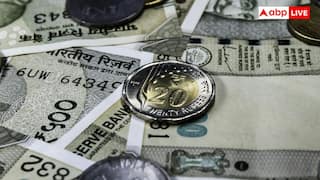In Several States, School Dropout Rate At Secondary Level Higher Than National Average, Shows Study
The government wants to achieve 100 per cent Gross Enrolment Rate (GER) at the school level by 2030 as targeted in the new National Education Policy and considers dropout as a hindrance.

New Delhi: West Bengal, Gujarat, Bihar and Tripura are among more than a dozen states where the school dropout rate at secondary level was higher than the national average of 14.6 per cent, according to official data.
The central government has suggested these states to take special steps to reduce the dropout rate.
This information has been obtained from the minutes of the meetings of the Project Approval Board (PAB) under the Ministry of Education on the 'Samagra Shiksha' programme for 2022-23. These meetings took place between April and July with different states.
According to sources, the government wants to achieve 100 per cent Gross Enrolment Rate (GER) at the school level by 2030 as targeted in the new National Education Policy and considers dropout as a hindrance.
According to the PAB, the dropout rate in 2020-21 at the secondary level in Bihar was 21.4 per cent, Gujarat 23.3 per cent, Madhya Pradesh 23.8 per cent, Odisha 16.04 per cent, Jharkhand 16.6 percent, Tripura 26 per cent and Karnataka recorded 16.6 per cent.
According to the documents, the estimated number of children with special needs (CWSNs) enrolled in schools in Delhi during the relevant period was 61,051, of which 67.5 per cent dropped out or could not be identified. The PAB has asked the Delhi government to complete the work of bringing dropout children back into the mainstream school education on an expeditious basis.
The dropout rate at the secondary level in Andhra Pradesh was 37.6 per cent in 2019-20, which came down to 8.7 per cent in 2020-21. The PAB has asked the state to continue efforts to reduce the dropout rate further.
According to the documents, in 2020-21, 12.5 per cent students dropped out at the secondary level in Uttar Pradesh with an average of 11.9 per cent for boys and 13.2 per cent for girls.
In West Bengal, the dropout rate at the secondary school level is more than 15 per cent in 10 districts. The PAB has asked the state to prepare a special action plan to bring down this rate.
In 2020-21 in Assam, 19 districts at the secondary level registered a dropout rate of more than 30 per cent. In Nagaland, this rate was more than 30 per cent in eight districts. The dropout rate at secondary level was 7.1 per cent in Kerala, 8.41 per cent in Uttarakhand and 10.17 per cent in Goa.
A recent survey by the United Nations Children's Fund (UNICEF) states that 33 per cent of girls drop out of school due to domestic work and 25 per cent due to marriage.
According to the UNICEF, it was also found in many places that after leaving school, children started working as labourers with their families or cleaning people's houses.
Anil Swarup, former secretary of the Department of School Education and Literacy, said that at gram panchayat and ward level, 'mapping' of children outside the purview of school education should be done.
He also said that teacher-parent level meeting should be organized at least once a month in schools to spread awareness on this important issue.
Dropout students should be identified and communicated by visiting their homes as sometimes not good exam result or the family situation is also the reason behind their leaving the schools, he noted.
(This report has been published as part of the auto-generated syndicate wire feed. Apart from the headline, no editing has been done in the copy by ABP Live.)
Education Loan Information:
Calculate Education Loan EMI
Related Video
Breaking News: Delivery Crisis Today, Zomato, Swiggy, and Other Platforms Face Worker Strike





































